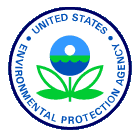Get news by email
 Survey of the nation's lakes Dec 6 - EPA is embarking on a three-year study of 909 lakes, ponds and reservoirs whose profiles are representative of all lakes in the United States. The last time EPA catalogued the status of lakes was in 1972-1976, when 815 lakes were evaluated nationwide. Survey of the nation's lakes Dec 6 - EPA is embarking on a three-year study of 909 lakes, ponds and reservoirs whose profiles are representative of all lakes in the United States. The last time EPA catalogued the status of lakes was in 1972-1976, when 815 lakes were evaluated nationwide.
News release | Read about the survey
Use caution during snow and ice response Dec 1 - Recent winter conditions have caused blackouts and delays in numerous states. Be sure to vent generator exhaust outdoors. Use road salts and deicers carefully.
Precautions for homeowners, municipalities, and airports
  Fortune 500s challenged to double their green power Dec 4 - Over 40 companies in the Green Power Partnership have been asked to purchase 5 billion kilowatt hours (kWh) of electricity from renewable sources such as solar, wind, biogas, or others. Green power currently accounts for just over two percent of America's electricity supply. Fortune 500s challenged to double their green power Dec 4 - Over 40 companies in the Green Power Partnership have been asked to purchase 5 billion kilowatt hours (kWh) of electricity from renewable sources such as solar, wind, biogas, or others. Green power currently accounts for just over two percent of America's electricity supply.
News release | The Green Power Challenge
Communities reduce smog ahead of schedule Nov 27 - Fourteen communities in southeast and central states, all participants in EPA's "Early Action Compact" program, are ahead of schedule in reducing ground-level ozone or smog.
News release | Where you live
Saving water is a job WEL done Nov 27 - The six winners of EPA's new Water Efficiency Leader (WEL) Awards were recognized for providing leadership and innovation in water efficient products and practices.
News release | Dig deeper into WEL
DuPont ordered to cut PFOA in WV, OH drinking water Nov 21 - Under the EPA order, the company will offer alternative drinking water or treatment to users living near DuPont's Washington Works facility if the level of perfluorooctanoic acid, or PFOA, detected in drinking water is equal to or greater than 0.50 parts per billion (ppb). This action level replaces the 150 ppb PFOA threshold set in 2002.
News release | Fact sheet | About PFOA
|


